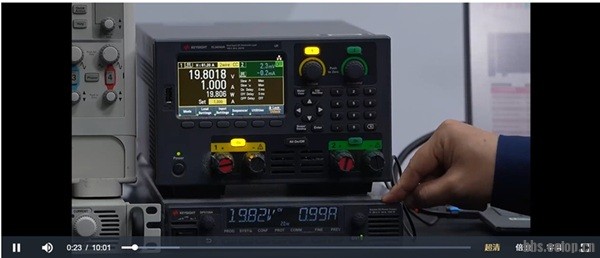https://mp.weixin.qq.com/s/xcsugAFELYWq7YXHA7bSHA
本文从微信公众号--数字IC小站,转载,欢迎关注,微信公众号更新更多更快
在验证过程中,往测试平台中添加新的测试激励很正常的事,这样的话就需要对原来的测试平台进行改进,有的时候需要修改原来的代码甚至可能修改一些数据结构,这个过程中可能会导致在原来的验证平台中引入意外的错误。那么为了保证原有平台或数据结构不变,通过对已经有的基类进行引申或者扩展,从而完善整个验证平台。
从基类做扩展并产生新的子类的过程叫类的派生,当一个类被扩展并创建之后,该派生类就继承了其基类的数据成员、属性和方法,这就是类的继承。
继承后的类可以实现以下功能:
1.继承了原来类中的方法,并可以修改
2.添加新的方法
3.添加新的数据成员
在实现以上功能的同时需要满足一定的规则:
1.子类继承父类的所有数据成员和方法
2.子类可以添加新的数据成员和方法
3.子类可以重写父类中的数据成员和方法
4.如果一个方法被重写,其必须保持和父类中原有定义有一致的参数
5.子类可以通过super操作符来引用父类中的方法和成员
6.被声明为local的数据成员和方法只能对自己可见,对外部和子类都不可见;对声明为protected的数据成员和方法,对外部不可见,对自身和子类可见。
首先看下:
ex1:
class A; virtual function void print_name();
$display ("this is the class a.\n");
endfunction
endclass:A
class B extends A;
virtual function void print_name();
$display ("this is the class b.\n");
endfunction
virtual function void new_display();
$display("this a new method.\n");
endfunction
endclass:B
program testbench;
initial begin
begin:class_test1
A classa;
B classb;
classa = new();
classb = new();
classa.print_name();
classb.print_name();
end
begin:class_test2
A classa;
B classb;
classb = new();
classa = classb;
classa.print_name();
classb.print_name();
end
begin:class_test3
A classa1,classa2;
B classb1,classb2;
classa2 = new();
classb1 = new();
classa1 = classb1;
classb2 = classb1;
classa2.print_name();
classb2.print_name();
classa2 = classa1;
$cast(classb2,classa2);
classa2.print_name();
classb2.new_display();
classb2.print_name();
// classa2.new_display();
end
end
endprogram上述代码中,很容易理解,因为classa2中不含有new_display这种method,因此会报error,我把其注释掉了,其次,我们使用$cast转换的前提是先把子类赋给父类,这时候才能使用cast把该父类再赋给子类,如果没有前提条件,还是会报error的,仿真结果如下:
# this is the class a. #
# this is the class b.
#
# this is the class b.
#
# this is the class b.
#
# this is the class a.
#
# this is the class b.
#
# this is the class b.
#
# this a new method.
#
# this is the class b.上述例子中利用了虚方法,如果去掉虚方法,那么情况如下:
ex2:
还是上述代码,只是去掉virtual,则仿真结果如下:
# this is the class a. #
# this is the class b.
#
# this is the class a.
#
# this is the class b.
#
# this is the class a.
#
# this is the class b.
#
# this is the class a.
#
# this a new method.
#
# this is the class b.
#ex3:
如果父类添加virtual method,但是子类不添加,仿真结果如下:
# this is the class a. #
# this is the class b.
#
# this is the class b.
#
# this is the class b.
#
# this is the class a.
#
# this is the class b.
#
# this is the class b.
#
# this a new method.
#
# this is the class b.
#ex4:
基类添加virtual method 后面的所有继承类都不添加,代码如下:
class A; virtual function void print_name();
$display ("this is the class a.\n");
endfunction
endclass:A
class B_novir_vir extends A;
function void print_name();
$display ("this is the class b.\n");
endfunction
function void new_display();
$display("this a new method.\n");
endfunction
endclass:B_novir_virclass
C_novir_vir extends B_novir_vir;
function void print_name();
$display ("this is the class C.\n");
endfunction
endclass:C_novir_vir
program testbench3;
initial begin
begin:class_test1
C_novir_vir classc;
B_novir_vir classb;
classb = new();
classc = new();
classb.print_name();
classc.print_name();
end begin:class_test2
C_novir_vir classc;
B_novir_vir classb;
classc = new();
classb = classc;
classb.print_name();
classc.print_name();
end begin:class_test3
C_novir_vir classc1,classc2;
B_novir_vir classb1,classb2;
classb2 = new();
classc1 = new();
classb1 = classc1;
classb2.print_name();
classc1.print_name();
classb2 = classb1;
$cast(classc2,classb2);
classb2.print_name();
classc2.new_display();
classc2.print_name();
end
endendprogram
仿真结果如下,说明只要是基类有virtual method就行,其他子类可以不需要有。
# this is the class b.#
# this is the class C.
#
# this is the class C.
#
# this is the class C.
#
# this is the class b.
#
# this is the class C.
#
# this is the class C.
#
# this a new method.
#

 /2
/2 



 eetop公众号
eetop公众号 创芯大讲堂
创芯大讲堂 创芯人才网
创芯人才网